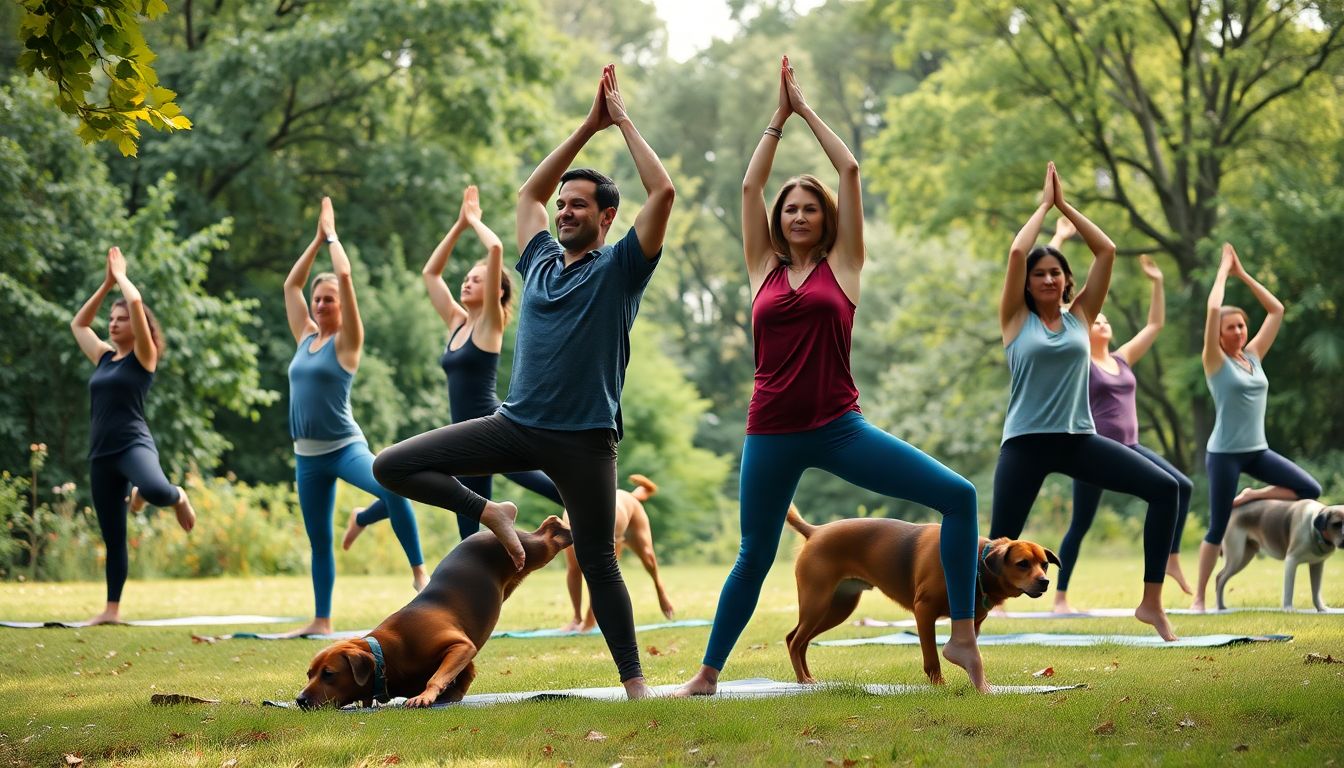
Yoga for Incredible Mobility: Improve Your Flexibility and Range of Motion
Unleashing your body’s potential can greatly enhance your life. With the rise of sedentary lifestyles, people often experience tightness and discomfort. Yoga offers a path to reclaim flexibility and improve overall mobility. This article explores how you can use yoga to enhance your range of motion and live a more active life.
The Modern Mobility Crisis: Statistics on Decreased Movement
In today’s world, many folks find themselves sitting for prolonged hours. According to recent studies, about 80% of adults experience some form of back pain, while 67% report joint stiffness. This lack of movement can lead to serious issues down the line, such as injuries or chronic pain.
Why Mobility Matters: Benefits Beyond Flexibility
Mobility is not just about bending and stretching. Key benefits include:
- Improved posture
- Enhanced athletic performance
- Reduced risk of injury
- Increased energy levels
- Greater overall well-being
By increasing your mobility, you also boost your physical and mental health.
Yoga as a Solution: Introducing the Practice and Its Mobility Benefits
Yoga is a holistic practice that emphasizes body awareness, flexibility, and strength. Engaging in yoga can help counteract the effects of sitting and promote better mobility. It’s accessible to everyone, whether you’re a seasoned yogi or a complete beginner.
Understanding Your Body’s Limitations
Assessing Your Current Mobility: Simple Self-Tests and Range of Motion Checks
A good starting point is assessing your own body. Try these simple tests:
- Reach Test: Stand and reach for your toes. How far can you go?
- Hip Opener: Sit on the floor and bring your knees to your chest. Can you keep your back straight?
- Spinal Twist: While sitting, twist your upper body to each side. How does it feel?
These checks can help pinpoint areas for improvement.
Common Mobility Issues: Identifying Areas Needing Improvement
Some common issues include:
- Back Pain: Often caused by tight muscles and poor posture.
- Hip Tightness: Results from prolonged sitting and lack of stretching.
- Shoulder Stiffness: Can arise from repetitive movements or poor alignment.
Identifying Underlying Causes: Addressing Potential Factors Limiting Mobility
Investigate what’s limiting your mobility. Some factors to consider are:
- Sedentary lifestyle
- Stress and tension
- Previous injuries
- Poor nutrition
Understanding the root causes can guide your practice.
Essential Yoga Poses for Improved Mobility
Hip Opening Poses: Examples and Modifications
- Pigeon Pose: Great for hip flexibility. If uncomfortable, try placing a cushion under your hip.
- Lizard Pose: Deep stretch for the hips. You can lower your back knee for added support.
Spinal Flexibility Poses: Examples and Modifications
- Cat-Cow Pose: This dynamic stretch mobilizes the spine. Move gently and focus on your breath.
- Thread the Needle: A calming twist that opens the shoulders. If you’re tight, keep the bottom arm on the ground.
Shoulder and Chest Opening Poses: Examples and Modifications
- Cow Face Pose: Opens shoulders. Use a strap if your hands can’t touch.
- Puppy Pose: Stretches chest and shoulders. Keep your knees on the ground for a gentler version.
Creating a Yoga Practice for Mobility
Building a Consistent Routine: Advice on Frequency and Duration
Aim to practice 3-5 times a week for 20-30 minutes. Consistency is key for improvement.
Warming Up Properly: Importance of Preparing the Body for Stretching
Always start with gentle movements. This can include:
- Basic stretches
- Joint rotations
- Deep breathing exercises
Listening to Your Body: Recognizing and Respecting Limits
Pay attention to how your body feels. If something hurts, back off a bit. Everyone’s body is unique, and it’s essential to honor those differences.
Advanced Mobility Techniques
Partner Assisted Stretching: Benefits and Examples of Poses
Working with a partner can enhance your stretches. Poses like Assisted Pigeon allow for deeper releases with another person helping you.
Using Props for Deeper Stretches: Belts, Blocks, Blankets, and Other Tools
Props can help you achieve better alignment and depth in your stretches. Use blocks for stability and belts for assistance in reaching.
Incorporating Breathwork: Connecting Breath to Movement for Deeper Release
Breathing deeply while stretching promotes relaxation. Focus on inhaling as you stretch and exhaling as you release tension.
Maintaining Mobility Long-Term
Lifestyle Changes for Improved Mobility: Importance of Diet and Daily Habits
Incorporate a balanced diet rich in nutrients. Hydration plays a critical role in muscle performance and recovery.
Preventing Injury: Strategies for Safe Yoga Practice
Use proper alignment in poses and avoid pushing limits too fast. Gradual progress helps prevent injuries.
Long-Term Benefits of Consistent Yoga Practice: Improved Posture, Reduced Pain, Increased Quality of Life
With regular yoga practice, expect to see long-term benefits such as better posture, decreased pain levels, and an enhanced quality of life.
Conclusion: Embracing a More Mobile Life Through Yoga
In summary, yoga serves as a powerful tool to enhance your mobility. Key takeaways include:
- Regular practice is essential
- Listening to your body promotes safety
- A few targeted poses can yield significant results
Embrace the journey to a more mobile life. Start today and notice how your body can transform through the art of yoga. Whether you’re looking to alleviate pain or simply enjoy movement, yoga provides the roadmap to a more flexible and active you.




